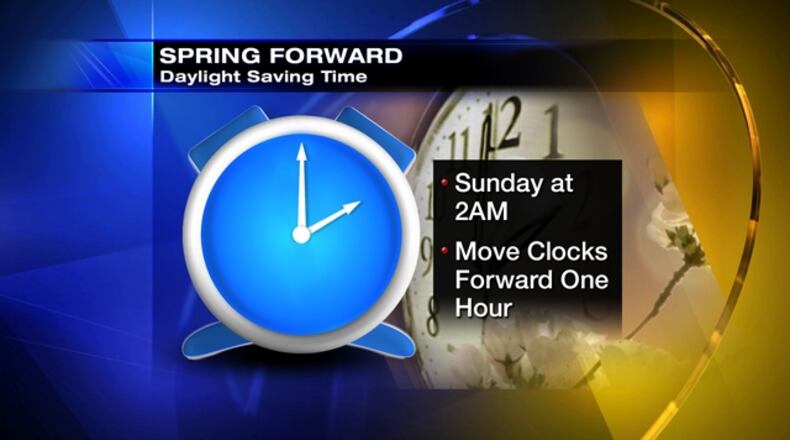Daylight saving time returns in the wee hours of the morning Sunday.
Most Americans will move their clocks ahead one hour — hence the phrase “spring forward, fall back.”
Only residents in Arizona and Hawaii are “exempt” from the annual time change, which officially occurs at 2 a.m. Sunday. So most people just set their clocks ahead one hour when they go to bed.
Historically, Ben Franklin is credited with coming up with the idea, but it wasn’t until World War I that the idea caught on in Europe to save energy.
The first “official” daylight saving time in the U.S. came about in 1966, when clocks were set ahead on the last Sunday in April and back on the last Sunday in October.
In 1987, the start of daylight saving time changed to the first Sunday in April, and in 2007, the start was moved up to the second Sunday in March and the end on the first Sunday in November (this year it’s Nov. 4).
The change to daylight saving time is also prime time for fire departments urging residents to change out batteries in smoke alarms and carbon monoxide detectors.
One more note: It’s daylight saving time, not daylight savings time. The change has nothing to do with counting your savings.
The Latest
Featured


